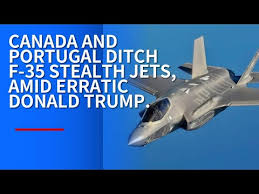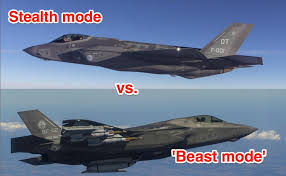My Article was published on the Indus International Research Foundation Website on 20 Mar 25.
In the modern battlefield, timely and accurate information is paramount. Artificial Intelligence (AI) has emerged as a transformative force in various sectors, and its integration into the military is particularly notable. AI’s integration into strategic and tactical decision-making transforms military operations by enabling leaders to anticipate potential threats, optimise resource allocation, and make faster, data-driven decisions. AI rapidly becomes a core tool for enhancing military decision-making, revolutionising strategies, and operational efficiency. It reshapes how military leaders approach battlefield tactics, logistics, and strategic planning through rapid data processing, sophisticated simulations, and predictive analysis. As armed forces worldwide increasingly adopt AI technologies, the implications for strategy, tactics, and operational efficiency are profound. While AI offers unprecedented benefits, its integration in military contexts introduces ethical concerns and strategic challenges that are central to its future role.
The Evolution of AI in Military Applications. The military’s interest in AI is not recent; it dates back several decades. The initial exploration of AI technologies in military contexts began in the 1950s and 1960s, focusing on simulations and rudimentary decision support systems. Over the years, advancements in machine learning, data analytics, and computational power have dramatically enhanced the capabilities of AI systems. In the 1960s, AI research focused on symbolic reasoning and game theory, with early applications in strategic simulations. The Cold War era spurred investments in AI research as nations sought technological advantages. The Gulf War in the early 1990s highlighted the importance of information superiority. AI technologies began integrating command and control systems, enabling real-time data analysis and enhanced situational awareness. The development of drones and unmanned systems marked a significant shift, with AI increasingly applied to operational contexts. Today, AI applications in the military encompass various areas, including autonomous vehicles, predictive analytics, intelligence gathering, and combat simulations. Countries like the United States, China, and Russia are investing heavily in AI research to enhance their military capabilities.
Benefits of AI in Military. Integrating AI into the military offers significant benefits, including increased efficiency, accuracy, and situational awareness. AI technologies streamline processes and enhance operational efficiency. By automating routine tasks, military personnel can focus on strategic planning and execution. AI systems improve the accuracy of military operations by providing data-driven insights that reduce human error. Analysing data in real time enhances decision-making, particularly in high-stakes environments. AI technologies improve situational awareness by integrating data from various sources, providing commanders with a comprehensive understanding of the battlefield. These practical advantages underscore the importance of AI in military decision-making.
AI in Military Contexts.
AI in the military can be broadly classified as data analytics, autonomous systems, decision support, and cyber defence. Its ability to quickly process large volumes of data and identify patterns has made AI a powerful tool for intelligence analysis, operational planning, and logistics optimisation.
Data Analytics and ISR (Intelligence, Surveillance, and Reconnaissance). AI-driven data analytics enhance ISR capabilities by analysing satellite images, social media data, intercepted communications, and more to identify potential threats. AI systems analyse real-time ISR data, recognising patterns that may indicate enemy movements or hidden threats. Machine learning models trained on historical data help predict potential adversarial actions, giving military leaders a tactical advantage. For example, deep learning models analyse satellite and drone imagery, identifying military installations, troop movements, or equipment locations with minimal human input. By providing commanders with this intelligence in near real-time, AI reduces the time needed to make informed tactical decisions.
Simulation and War Gaming. AI-powered simulations are invaluable for testing different scenarios in war gaming exercises. These simulations incorporate diverse factors, including adversary capabilities, weather, and terrain, to provide a realistic projection of possible outcomes. Such tools allow leaders to plan and rehearse operations, identify weaknesses, and refine strategies. AI simulations support large-scale strategic planning and small-unit tactics, helping teams understand the consequences of their actions before taking them on the battlefield. War gaming simulations also train and prepare soldiers and officers for complex and high-stress situations through realistic, AI-generated scenarios.
Predictive Maintenance and Logistics Optimisation. AI enhances logistics by predicting when vehicles or other equipment may need maintenance, ensuring that military assets are operational when required. Predictive maintenance uses AI to analyse sensor data from equipment, forecasting failures before they happen and reducing operational downtime. For instance, AI predicts tank engine wear or helicopter rotor fatigue based on operational data, allowing maintenance teams to perform pre-emptive repairs, which can be critical in conflict scenarios. This application is more efficient and potentially life-saving, a testament to the significant role AI plays in military operations.
Autonomous and Semi-Autonomous Systems. Autonomous systems driven by AI are reshaping the modern battlefield. Drones, ground robots, and other unmanned systems operate with varying degrees of autonomy, performing ISR, transport, and combat tasks that traditionally require human soldiers. These systems extend operational capabilities, allowing military forces to engage in high-risk missions with minimal direct exposure to human personnel.
Unmanned Aerial and Ground Vehicles. AI enables drones and unmanned ground vehicles (UGVs) to operate autonomously in complex environments. Equipped with computer vision and machine learning algorithms, these systems navigate hostile terrain, conduct reconnaissance, and sometimes engage targets without direct human intervention. These AI-driven vehicles can also perform multi-mission roles, often shifting from reconnaissance to combat, depending on mission needs. This flexibility allows commanders to adapt real-time strategies, using the same resources for multiple purposes, improving efficiency, and extending operational reach.
Swarm Technology. Swarm technology, in which groups of autonomous systems work collaboratively, represents a new frontier in military robotics. AI allows swarms of drones to communicate, make collective decisions, and adapt to changing environments, enabling them to overwhelm defences, conduct coordinated surveillance, and jam enemy signals. In a combat situation, drone swarms could confuse adversary radar systems or execute diversionary tactics, creating openings for human-operated forces. This level of coordination and adaptability would be almost impossible without AI, which processes environmental data and adjusts the swarm’s behaviour in real-time.
Autonomous Combat Systems and the Kill Chain. One of the most controversial uses of AI in the military is automating the “kill chain”, the sequence of decisions from target identification to engagement. While current norms generally require human oversight, there is a growing interest in developing systems that can autonomously engage targets under specific circumstances. This application raises profound ethical and legal questions, as fully autonomous combat systems could operate beyond human control, making decisions with lethal consequences. Concerns over accountability, discrimination between combatants and civilians, and the potential for accidental escalation of conflicts are central to debates on the future of such technologies.
Cyber Defence and Information Warfare. Cyber warfare is a crucial area where AI aids in protecting military assets from digital threats. With its ability to rapidly detect anomalies, AI helps military cyber teams identify potential intrusions and respond to cyber attacks, significantly improving defence against increasingly sophisticated adversaries.
Threat Detection and Response. AI-powered systems monitor military networks, identifying unusual activities and rapidly flagging potential threats. These systems can differentiate between normal and malicious behaviour by analysing network patterns, user behaviour, and system performance. Machine learning models constantly adapt to new tactics and techniques cyber adversaries use, making them crucial in mitigating advanced persistent threats (APTs). AI also plays a role in “active defence,” where it identifies an intruder and takes countermeasures, potentially isolating affected systems or misleading the adversary. Such rapid response mechanisms enhance cyber security in ways that are challenging to achieve with human teams alone.
Information Warfare and Disinformation Detection. Information warfare has become a critical aspect of military operations, with adversaries frequently spreading misinformation to undermine morale and erode public trust. AI-driven tools can identify disinformation patterns by analysing social media and other communications platforms and flagging content designed to mislead or destabilise. AI’s ability to monitor, detect, and counteract information attacks helps protect soldiers and civilians from psychological manipulation while countering adversarial narratives that aim to weaken resolve or incite division.
Decision Support Systems (DSS). AI-based DSS provides commanders with actionable insights, predicting adversary behaviour and logistics needs and suggesting strategies to address dynamic battlefield conditions. AI’s benefits in military decision-making are substantial, enhancing speed, accuracy, and operational readiness. AI allows faster decision-making by processing information and identifying threats quicker than human operators. This speed is critical in time-sensitive combat situations where delayed responses can mean the difference between success and failure.
AI-enabled Systems.
Project Maven. Initiated by the U.S. Department of Defence in 2017, Project Maven aims to leverage AI to enhance the military’s ability to analyse drone footage and other visual data. By employing machine learning algorithms, Project Maven can automatically identify objects and activities in video feeds, significantly improving the speed and accuracy of intelligence analysis. According to the DoD, “Project Maven enables the Department of Defence to leverage AI and machine learning to make sense of vast amounts of data.” This project exemplifies the practical application of AI in military operations, transforming how intelligence is gathered and analysed.
Aegis Combat System. The Aegis Combat System is an advanced naval weapons system used by the U.S. Navy and allied forces. It employs AI to enhance threat detection, tracking, and engagement capabilities. Aegis integrates data from multiple sensors to provide real-time situational awareness, enabling rapid decision-making in combat scenarios.
Lethal Autonomous Weapons Systems (LAWS) are a controversial application of AI in military operations. These systems can select and engage targets without human intervention, raising ethical and legal concerns. Proponents argue that LAWS can reduce risks to human soldiers and increase operational efficiency. However, critics warn that lacking human oversight in lethal decision-making could lead to unintended consequences. The United Nations has called for discussions on regulating autonomous weapons, emphasising the need for human accountability in such systems.
Challenges and Concerns.
Implementing AI in the military involves several practical challenges, including ethical concerns, data quality, adversarial threats, and potential over-reliance on technology. While AI presents significant opportunities for military decision-making, several challenges and ethical considerations must be addressed.
Data Privacy and Security. Integrating AI into military operations raises concerns about data privacy and security. Collecting and analysing vast amounts of data, including personal information, can lead to potential misuse or unauthorised access. Ensuring data integrity and protecting sensitive information are critical challenges for military organisations. Cyber security measures must be robust to prevent adversaries from exploiting vulnerabilities in AI systems.
Data Quality and Integration. AI systems require high-quality, structured data to make accurate decisions. Military data sources are often fragmented, making integrating and ensuring data quality difficult. If AI systems operate on poor or incomplete data, they may produce incorrect or unreliable decisions, which could have dire consequences.
Reliability and Trust. AI systems are not infallible and can be prone to errors, particularly in complex and dynamic environments. Building trust in AI systems is crucial for military personnel to rely on them in high-stakes situations. Ensuring the reliability and accuracy of AI algorithms requires continuous testing and validation. Military organisations must establish protocols to assess the performance of AI systems before deployment.
Ethical Implications, Accountability and Responsibility. Despite its benefits, AI in military decision-making raises moral and legal concerns, particularly regarding autonomy, accountability, and adherence to international laws. The potential for machines to make life-and-death decisions without human intervention raises concerns about accountability and moral responsibility. Accountability can be ambiguous in AI-driven operations. If an autonomous weapon causes unintended harm, it is often unclear whether responsibility falls on the AI developer, the commanding officer, or the operator. Establishing clear accountability is essential to prevent the misuse of AI technologies and to ensure legal and ethical conduct in military operations. The moral implications of using AI in warfare have led to calls for regulatory frameworks to govern the development and deployment of autonomous systems. Experts argue that human oversight is essential to maintain ethical standards in military operations.
Compliance with International Law. Many AI applications in warfare, such as autonomous drones and weaponised robots, may challenge existing international treaties, including the Geneva Conventions, which govern the conduct of war and protect non-combatants. The potential for autonomous systems to make lethal decisions without human oversight raises questions about compliance with these international norms.
Adversarial AI and Deception. The potential for adversaries to exploit AI technologies poses a significant threat to military operations. Hostile entities can exploit cyber security vulnerabilities in AI systems to disrupt operations or manipulate data. For example, an adversary might feed false data into an AI system or use techniques to mislead autonomous systems, potentially leading to harmful or counterproductive decisions. Military organisations must develop counter-AI strategies and robust cyber security measures to safeguard their systems from adversarial threats. Collaboration with industry and academia can enhance resilience against emerging threats.
Dependence on Technology and Operational Vulnerability. Over-reliance on AI could create vulnerabilities, particularly if these systems are compromised or disabled in combat. If soldiers and commanders become too dependent on AI-based decision support, they may lack the necessary skills or resilience to operate without these tools in high-stress situations.
Future of AI in Military Decision-Making
As AI technology evolves, its role in military decision-making will expand. Several key areas warrant attention for future developments. The trajectory of AI in military decision-making suggests further integration, with increased autonomy in combat systems, more sophisticated predictive capabilities, and enhanced collaboration between human and AI decision-makers. However, the future of AI in military contexts will depend on addressing current ethical concerns, refining regulatory frameworks, and developing global agreements on autonomous weaponry.
Ongoing Research and Development. Continued research and development in AI technologies will be critical for addressing military applications’ challenges and ethical implications. Collaboration between military organisations, academia, and industry can drive innovation. Governments and defence agencies should invest in research programs exploring AI’s ethical, operational, and technological aspects in military contexts. This approach will ensure that AI systems are developed responsibly and effectively.
Human-AI Teaming Models and Collaboration. The future of military decision-making will likely involve greater collaboration between humans and AI systems. AI can augment human decision-making by providing data-driven insights, while human operators can offer contextual understanding and ethical considerations. This human-AI teaming approach leverages AI’s data processing and pattern recognition strengths while preserving human oversight and moral judgment. Developing effective collaboration models will be crucial for maximising AI’s benefits in military operations.
Advanced Training and Adaptation. As AI tools evolve, military training will adapt to integrate AI-based decision-making into officer training and war gaming exercises. Future military professionals must understand AI’s capabilities and limitations to ensure they can use these tools effectively and ethically. Enhanced training programs are essential to prepare military personnel to integrate AI technologies. Training should focus on developing skills in data analysis, AI ethics, and human-machine collaboration.
Regulatory Frameworks. The rapid advancement of AI technologies necessitates the establishment of regulatory frameworks to govern their use in military operations. Such frameworks should address ethical considerations, accountability, and oversight in autonomous systems. International cooperation is essential for developing norms and standards regarding the use of AI in warfare. Establishing treaties or agreements can help mitigate the risks of autonomous weapons and promote responsible AI use.
International Collaboration and AI Arms Control. International collaboration and regulation will be essential to manage the risks associated with military AI. Nations may need to negotiate treaties similar to those that govern nuclear and chemical weapons, establishing protocols and limits for AI-driven autonomous weapons.
Conclusion
Integrating AI into military decision-making reshapes how armed forces operate, strategise, and engage in combat. While AI offers significant benefits regarding efficiency, accuracy, and situational awareness, it also raises significant ethical and operational challenges. As military organisations continue to explore AI technologies, addressing these concerns will ensure responsible and effective use in the field. Balancing AI’s benefits with the principles of international law and ethical warfare will be essential to shaping a future where AI is a responsible and effective partner in military decision-making. The future of military decision-making will depend on finding the right balance between leveraging AI’s capabilities and maintaining human oversight and accountability. As AI technology advances, ongoing research, regulation, and collaboration will ensure that its deployment in military contexts aligns with humanity’s broader goals and values.
Please Do Comment.
For regular updates, please register your email here:-
References and credits
To all the online sites and channels.
Pics Courtesy: Internet
Disclaimer:
Information and data included in the blog are for educational & non-commercial purposes only and have been carefully adapted, excerpted, or edited from reliable and accurate sources. All copyrighted material belongs to respective owners and is provided only for wider dissemination.
References: –
- U.S. Department of Defence. (2017). Project Maven. Retrieved from DoD Website.
- Richardson, J. M. (2016). “The Future of Naval Warfare.” Proceedings of the U.S. Naval Institute, 142(5), 24-30.
- U.S. Army. (2019). Army Artificial Intelligence Strategy. Retrieved from Army.mil.
- Scharre, P. (2018). Army of None: Autonomous Weapons and the Future of War. New York: W.W. Norton & Company.
- United Nations. (2019). Report of the Secretary-General on Lethal Autonomous Weapons Systems. Retrieved from UN Website.
- Hodge, N. (2017). “The Impact of Artificial Intelligence on Military Strategy.” Journal of Military Ethics, 16(4), 303-319.
- Defence Advanced Research Projects Agency. (2021). AI Next Campaign. Retrieved from DARPA.mil.
- Lin, P. (2016). “Why Ethics Matters for Autonomous Cars.” Autonomously Driven Cars: Ethical Implications of the Technology. Washington, D.C.: The Brookings Institution.
- Altmann, J., & Sauer, F. (2017). “Regulating Artificial Intelligence in Warfare.” The International Journal of Human Rights, 21(2), 147-161.
- Cebrowski, A. K., & Gartska, J. J. (1998). “Network-Centric Warfare: Its Origin and Future.” U.S. Naval Institute Proceedings, 124(1), 28-35.



